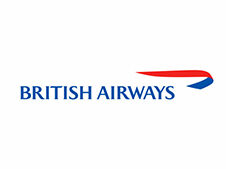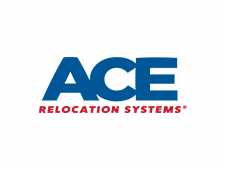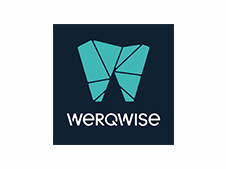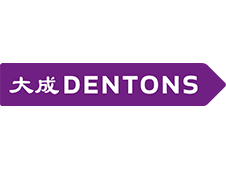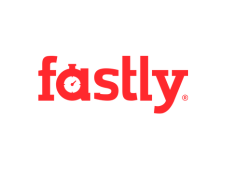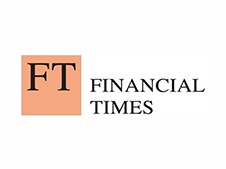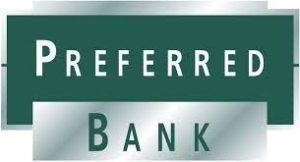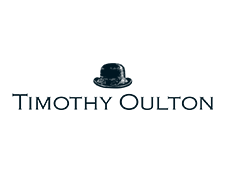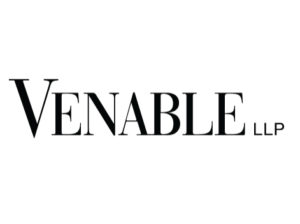2015: It is all about the EXPERIENCE
By Simon Elliot, Director of Business Development, Aramark and LifeWorks Restaurant Group
As the wave of New Year celebration sweeps the world from Samoa to New Zealand, Australia and Japan, 2015 is on its way this New Year’s Eve as I write. This is always a time of reflection on the year gone by and the year to come.
Working with some of the leading companies of the world, thought leaders, designers, amenity providers and corporate real estate professionals this year, I realize that there is a sea change taking place in how the workplace is regarded. In fact, at the CORENET North America Summit, there was talk of a workplace “Revolution”, at The Great Place to Work Conference, talk of a “Movement” in transforming the workplace and all for not only creating a better workplace, more engaged people, better performing businesses but at the very core: “Winning the War for Talent”.
Earlier this year, Corporate Real Estate professionals gathered in National Harbor DC and the theme for the summit was Changing the Conversation from Cost to Value. This is a fundamental change in language. A transformation from reducing costs to understanding that ultimately how enterprises can benefit from the investment in their real estate portfolio, amenities and services and how they can enable and empower the workforce.
And in New Orleans, The Great Place to Work Institute’s National Conference gathered with such as Zappos presenting: Personal Emotional Connections: How truly knowing your people creates a highly engaged workforce, NetApp: Beyond Engagement – Inspiring Employees to Be Your Competitive Advantage and Blake Nordstrom talking about the Nordstrom Culture of Empowerment.
At the WORKTECH 14 West Coast Conference in San Francisco, Kristine Woolsley talked about the power of creating the emotional connection with the workplace, the enterprise, its history, its founders, leaders and its people.
It appears that there is a common theme emerging here: it is about feelings, emotional connection; it is all about creating an EXPERIENCE.
Not only in the workplace, we have seen this very interesting shift emerge over the past few decades on how we select, buy and provide feedback on our purchases – from cars to flights, from clothing to devices and from domestic appliances to where we choose to spend our hard earned money dining out.
Do you remember the classic Bakelite telephone, inclusive of the dial that span back to zero with each number. Each spin would take between around 1 and 3 seconds and if you made an error, there was no “cancel call” or “back space” but start from scratch. Local numbers (7 digits) would take an average of 7 seconds at best. Dialing out of town or even worse internationally then the longer the number, the longer the dial time. To dial one number from the USA to the UK for example would have taken over 15 seconds – just to dial!
Connected to a wall socket and with the handset on the curly whirly wire, you made the call wherever the socket was – no walking and talking back then!!
They did however come in a range of attractive colors: Black, Brown, Cream, and Red!!!
The most important thing for consumers then was that the phone actually worked. Consumers did not have answering machines, text, email, diary, camera, Instant Messaging, Facebook, Twitter back then – just the act of calling and talking to the intended recipient of the call was simply enough.
This week I received my new i-Phone and I reflected on my Apple experience:
• Receiving an email from AT&T telling me I was due an upgrade prompting me to reorder a new one (what an unexpected treat!)
• Following the link and reordering with ease. EASE being the operative word contributing to the experience.
• 72 hours later – a knock at my door- my new phone! I remember thinking to myself, wow that was quick, my new phone in time for Christmas. (what a treat)
• I opened the packaging box of beauty to reveal the latest addition to my growing device selection. I could not help but admire the design and the feeling that I was opening something special.
• Underneath the tray, I found not only another phone charger but also a bonus set of earphones (another treat).
• Downloading my existing settings from i-Cloud was just really dead simple and with one quick easy call I was connected and hey presto my new phone was enabled.
Apologies for going through this experience in such detail as I am sure that you have experienced the same thing but I really wanted to ask you one question:
How did the experience make you feel?
I know how I felt: Unexpected treat(s), it was quick, easy, exceeded my expectations; I felt I was being looked after, cared for, considered, and valued. The experience left me with a sense of growing loyalty.
Owning a Bakelite phone was simply not the same. (Not that I am quite old enough to own one but my parents did)
In days gone by, experiences were reserved for the rich as they travelled first class, went to fancy, expensive restaurants, The Grand Tour, or for example in the fine tailors of Saville Row, London.
During the Holidays I asked my Wife what she wanted for Christmas and the response was a handbag and being a typical male of the species (but I thought very pragmatic) I suggested that we go together so she can select the bag of her choice to avoid me getting the wrong one.
Arriving at Nordstrom’s, in the handbag section, I found the apparent differing experiences fascinating. The difference was not so much with the actual product themselves but the different experiences (and prices) associated with each. It seemed to me that the better experience; marketing, lighting, display and packaging came with a bigger price tag. Some of the handbags even came with a fancy bag to put your shiny new bag in!
I tried to get to the bottom of it with my wife, “Why would you pay $1,000 for a bag with “a name on it” when you could get an equally good bag for a fraction of the price?”
This line of questioning went down like a lead balloon but the concept still fascinated me – were we buying a bag or the experience?
Driving home in our family Ford Explorer and having been a BMW guy for most of my adult life, I again reflected on why I had moved my loyalty from BMW to Ford after all of these years.
In the first instance, BMW used to be a far superior product to Ford (for many years) and the BMW dealer experience of sleek showrooms, sales people dressed in suits (taking orders from brand loyalists such as I and not having to try too hard), high end, free coffee and a gift with your new purchase were all experiential factors that won and maintained my brand loyalty for a number of years (and a number of cars).
Now the new Ford Explorer is in product terms on the same playing field (or if not better), less expensive, great, stylish and modern design, but what was the experience with Ford?
It was clear that my local dealer really wanted my business, not just to sell me another car but also to deliver me a great experience and win my loyalty for years to come. They treated me really well, made me feel wanted, special and that the decision to purchase the Explorer was easy (no hidden extras such as a stereo, alloy wheels or floor mats as per my previous experiences).
The experience made me feel good, wanted, valued and comfortable about changing my loyalty.
I remember one special occasion whilst in the UK; I headed to the “Best Restaurant in Town” with high expectations. When I arrived I remembered the place looked stunning (even the bathrooms were amazing!), cool Conran style furniture, menu looked delicious, cocktail list looked impressive (and very tempting) and overall looked very promising indeed.
On the way home from the meal I was reflecting upon the $200+ price tag per head, the extremely stuffy service, despite grood food it didn’t quite live up to expectation and my sore derriere from the pretty but very uncomfortable seats and the fact that I was still hungry!
Thing is, although on first glance the restaurant had all the ingredients of success to win my loyalty, I did not feel good about my experience and although not a conscious decision, fact of the matter is that I never returned.
Abraham Maslow in his 1943 paper “A Theory of Human Motivation”, theorized that the human form must first attain the Physiological level of survival in water, food and warmth before they can elevate up the pyramid (one layer at a time) to attain safety, then Love/Belonging then Esteem until they reach the top – Self Actualization.
Having spent time in East Africa, I observed the Masai and Bantu tribes and wondered to myself if they care about the experience or they just care that the product can do its job. A bag that carries things, food that simply nourishes, a vehicle that can save walking in some cases many tens of miles for supplies, water or medical treatment, a phone that works in an emergency (or even just to have access to these things in the first place!).
It strikes me that as consumers we have simply progressed up the Maslow Pyramid. The Bakelite phone was at the time just a utility, the other examples of the branded bag maybe because of our need for Love, Belonging or even Esteem but our desire for experiences is truly about Self Realization.
As a society, it would seem that more of us are higher up Maslow’s pyramid and Hierarchy of Needs and that as a result our desire and appetite for experiences has somewhat outgrown his pyramid as the top level is now ballooning.
One separate observation for another time is what we do as a society if this Self Actualization bubble bursts and we have forgotten how to satisfy ourselves of the base levels of the pyramid.
At the same time, the workforce is changing as the Baby Boomers near retirement and the fact that the Millennial generation will form over 75% of the workforce by 2030. Those organizations that do not change their workplace environment will inevitably diminish their success in attracting and retaining the best and brightest.
It would seem that we are in the age of Self Realization and this fundamentally changes how enterprises design, build, and market and create the experience around the product, however I believe that “the Product” also applies to the workplace. No longer is it simply enough for employers to offer a job and pay.
The expectations of today’s workforce are far greater than ever before.
Since 1989, Dilbert has satirized the workplace and poked fun at the relationship between employee, cohorts and employers and in the workplace environment from water cooler comedy to the stalwart of the office, the cubicle.
The cubicle, thankfully, is a dying breed and workspaces are becoming more employee friendly, more accommodating, more flexible, more welcoming and more conducive to engaging the workforce, encouraging collaboration, connectivity, community.
In a survey of Millennials over 70% said that they would prefer not to have a job than one they did not like and voted for employee amenities and experience being more important to them than pay alone.
The Great Place to Work Institute talks about how the relationship between Employer and Employee has changed and today should be based on a mutual partnership of Trust surrounded by the key elements of Credibility, Fairness and Respect and building of organizational Pride and Camaraderie.
The result?
A content and committed workforce, aligned goals and common purpose. Higher engagement, lower turnover, reduced absence, collaboration, creativity and ultimately more successful, productive and more profitable business. (Yes, such things can really contribute to and boost profits!).
There are many great examples of this mantra at work and the results do speak for themselves with the likes of some of the world’s most successful companies: Google (#1), SAS (#2), Genentech (#6), SalesForce (#7), Intuit (#8), The Container Store (#28) and Rackspace (#29) all of which are recognized and named as the top Great Places to Work.
One of my favorite examples of getting both the Customer and Employee experience just right is Zappos, the online shoe retailer. Zappos CEO, Tony Hsieh started the business in 1999, which has now grown to over $1B in annual revenues.
Early on Zappos made a very deliberate decision to redirect marketing expenditure to the customer experience:
• Encouraging “Try & Buy”
• Free returns if you choose not to buy
• Only listing products that are in stock
• 24/7 warehouse (although expensive, faster dispatch of orders)
• Encouraging calls (about anything) to their person-to-person call center (apparently the record call was logged at 4 hours)
• Personal call to every customer at least once during the experience
• Free surprise upgrades
• 24 hour delivery (in most cases) as opposed to the 2 to 5 days advertised.
A very good friend of mine told me over the holidays that she had purchased a pair of shoes on Saturday 20th December at what must be the busiest time of year and not expecting them to arrive until after Christmas. Her package arrived 36 hours later on Monday morning!
How did this make her feel?
The notion of “over delivery”, going one-step further, and an extra mile has always been around our vernacular but the results of doing so, delivering beyond expectations create word of mouth marketing and serious brand and experience loyalty.
Creating an environment where the workforce and customers are advocates is a key shift from traditional marketing to leveraging social marketing opportunities and channels.
Advocacy is probably the most valuable result in getting the experience right. Through setting the scene, gathering the right ingredients and assembling them to create the right environment – in this age of digital and social media, the most powerful advertising is that of each one of your Customers and Employees becoming a powerful extension of your sales and marketing efforts – The Zappos mantra which certainly seems to have worked for them.
Get the balance right and the results can be exponential, get the balance wrong and the results can be devastating and deeply damaging.
Looking at the Workplace Experience the difference between getting it right and not so right can be huge, particularly in tackling the modern phenomena of Winning the War for Talent – a growing and increasingly strategic imperative for today’s businesses. The Great Place to Work Institute claim this to be the #1 priority for enterprises that want to thrive in this modern business world.
Simply put, those that attract and retain the best talent and keep them engaged will thrive, those that don’t risk the distinct danger of withering on the vine.
Thriving workplaces of the future will have embraced this need for change.
There exists a growing need to transform the workplace experience that it becomes an extension to employee’s lives as opposed to a diversion. The space will be welcoming, accommodating – encouraging creative collisions, collaboration, and connection.
Casual environments will result in more collaborative space and less traditional. Meetings held in break rooms, restaurants, community spaces. Formal offices with desk, filing cabinet and phone swapped for community workspace with bistro table, tablet and a Latte.
Convenience will also play a big part allowing your workforce to do things at work that ease the burden of work on their personal lives. Transport to work, food at work, food for home, transport home are some examples but the list of convenience in the workplace is vast and has included everything from childcare to physicians and from convenience stores to cleaning employee’s homes.
The mix of these employee amenities will change from business to business, from workforce to workforce but what shouldn’t be lost is the theme of CORENET’s 2014 North America Summit;
Changing the Conversation from Cost to Value.
We believe that food has formed the basis of society, community since the beginning of humankind, what better place to build the workplace community and culture from than your onsite food and employee amenities platform.
So how can you best engage a food and facilities services partner and enable them to contribute to Enhancing the Workplace Experience?
• Develop a strategic partnership that understands and embraces the strategic imperatives of the enterprise.
• Creation of a mutually aligned partnership that through Insights drives Innovation that delivers Impact in the process.
• Designs a workplace space which will facilitate the connection between enterprise and workforce, providing a range of amenities and experiences that enrich and nourish the lives in the employee experience.
• Delivers a range of services and experiences that forms the basis of community, connectivity and collaboration.
• Continuous cycle of measurement, review, enhancement, improvement, variety and fun!
The power of appointing an aligned partner, capable of delivering exceptional experiences and transforming the workplace experience can have significant effects on the workplace, workforce and ultimately business performance.
Accelerated by demographic changes in the workforce, The Great Place to Work Institute mantra is all about the employee experience and those organizations who invest in creating or enhancing The Workplace Experience will be the ones that will thrive in 2015 and beyond. Those enterprises that do not will be on a long slide to losing the War for Talent.
It’s no longer about The Product (in this instance work), it’s all about the
EXPERIENCE.



